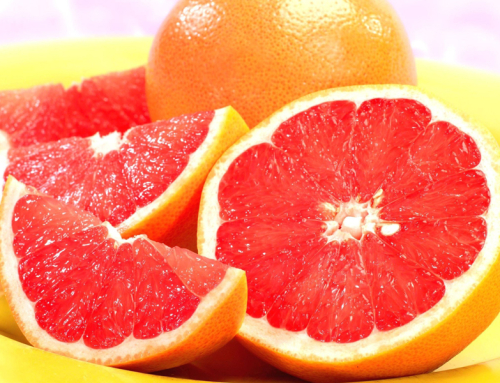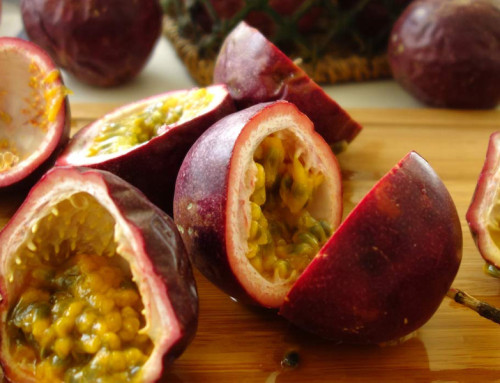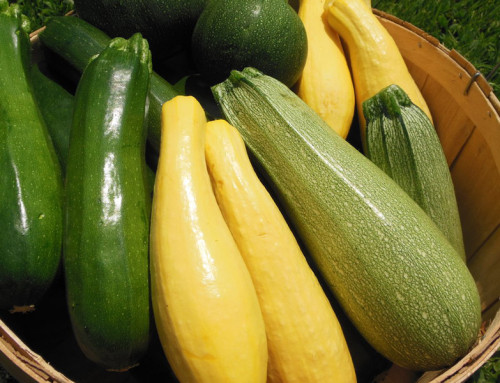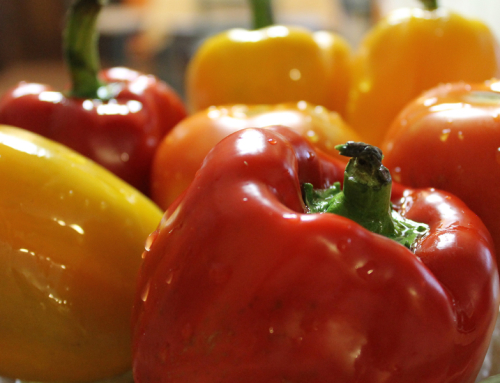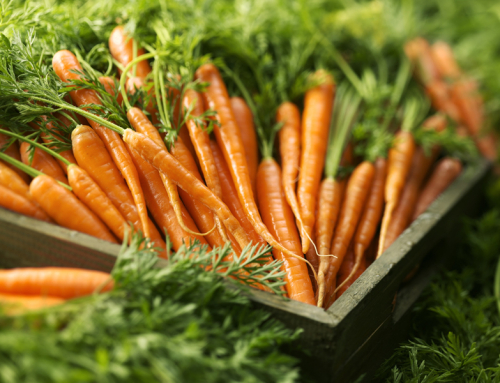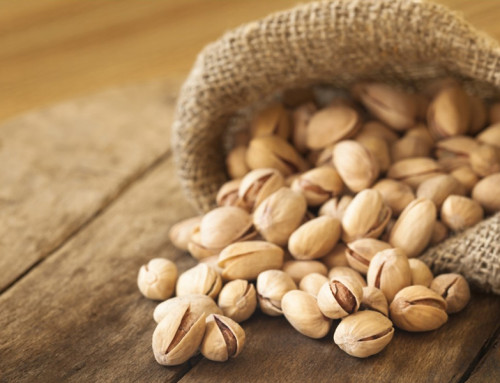The following calorie counts are for raw oranges without the peel. Oranges are not generally cooked, though they may be canned in syrup or frozen. There is no caloric difference between organically-grown oranges and commercially-grown oranges. The calories in oranges are mostly dependent on the size of the fruit or variety of the orange.
Standard Oranges with Seeds:
- 1 oz (28 g) = 13 calories
- 100 g = 47 calories
- 1 orange section = 8 calories
- 1 cup of orange sections or slices = 84 calories
- Large (3” diameter) = 86 calories
- Medium (2.5”) = 61 calories
- Small (2.25”) = 45 calories
Grated Orange Peel (zest)
Grated orange peel, or “zest”, has near zero calories when used as a spice. It gives a lot of flavor for a small amount, but as for burning the calories, if you sneeze, you’re even.
- 1 tbs zest (6 gr) = 5.8 calories
- 100 g of peel = 97 calories
Orange Juice
Orange juice tends to have more calories because we tend to drink more than a short half cup of juice. Many of the nutritional compounds of oranges are lost in the juicing process. Additionally,eating the whole orange provides fiber which slows the absorption of the sugar in the juice. Orange juice only has 25% of the vitamin-C of the whole orange, so eat the flesh and peel to get it all.
- Unsweetened orange juice, 3.3 ounces (100 ml) = 40 calories
Other Varieties of Oranges:
- Navel, medium = 64 calories (The Navel oranges are one of the most popular seedless oranges in the world. The name comes from the belly-button indentation at one end. A medium-sized one contains 134% of the RDA of vitamin C, while the standard seeded orange has only 116%.)
- Tangerine or tangelo 2.5” (100g) = 37- 44 calories
- Clementine, average = 25 calories
- Clementine (100 g) = 47 calories
- Jaffa, small = 25 calories
- Jaffa, large = 100 calories
- Mandarin = 32 calories
- Mandarin (100 g) = 53 calories
- Satsuma, large = 37 calories
- Satsuma (100 g) = 53 calories (The Satsuma is a member of the Mandarin orange family and known in Japan as “Mikan”. Sometimes called the “seedless Mandarin.”)
For dehydrated oranges, the drying process increases the sugar concentration, which tends to crystallize by decreasing the water content, but the calories remain the same. Some manufacturers add sugar which increases the calories per ounce. Solution? Dehydrate your own oranges at home.
- Oranges contain no cholesterol.
- The overall nutritional makeup of an orange is 3% Fat , 89% Carbohydrates and 9% Protein.
- Oranges have more dietary fiber content than most fruits and vegetables, providing about 12.5% of the recommended daily allowance.
- Oranges contain the vitamin C, carotenoids all of which have been identified as having protective cardiovascular effects, and are necessary for immune system health.
- Oranges also contain vitamin A, vitamin B6 and moderate amounts of vitamin E along with iron, thiamin, riboflavin, niacin, phosphorous, copper, magnesium and zinc.
- Oranges contain folate that is necessary for lowering levels of the cardiovascular risk factor, homocysteine.
- Oranges contain potassium, which helps lower blood pressure, protecting against stroke and cardiac arrhythmia and is essential for strong bones.
- The natural fructose in oranges is believed to help balance blood sugar levels.
- An orange has over 170 phytonutrients and more than 60 flavonoids in its antioxidant arsenal. Many of these have been shown to have anti-inflammatory, anti-tumor and anti-blood clotting qualities.
- Phytonutrient compounds in citrus fruits, including oranges, called limonoids have been shown to help fight cancers of the mouth, skin, lung, breast, stomach and the colon. The bioavailability and long persistence in the body may explain why citrus limonoids are potent anti-carcinogens that may continuously prevent cancerous cells from proliferating. An Australian study found that citrus could reduce the risk of stomach, mouth, larynx and pharynx cancers by 40 to 50 percent. Other natural anti-carcinogens are persistent for less time. The phenols in green tea and chocolate, for example, remain active in the body for only 4 to 6 hours.
- Oranges contain many other healing properties as well as phytonutrients that have anticancer qualities, such as hesperetin and naringenin, anthocyanins, hydroxycinnamic acids, and a variety of polyphenols.
- Oranges contain high amounts of a carotenoid called beta-cryptoxanthin that support respiratory health and has been shown to reduce the risk of lung cancer by 27%.
- Oranges may help to treat stomach conditions like irritable bowel syndrome and stomach ulcers and may help reduce risk of stomach cancer. Eating an orange daily can lower the occurrence of H. pylori bacterium and reduce the risk of infections.
- Eating oranges helps the body to absorb nutrients and is better than taking supplements for the same vitamins and compounds.
BTW, it’s not Florida, but Brazil that is the largest orange producer in the world.
What? Eat the orange peel? Are you daft?!
Not all. Not eating the peel is daft. The peel is made up of 3 parts, the outer peel, the white albedo and the pith. Each part is packed with extra beneficial nutrients that most people throw in the trash or on the compost heap. For example, oranges are considered a source of calcium but 100 g of orange flesh contains only 40 mg of calcium, while the same amount of orange peel has 4 times as much, or 161 mg of calcium. Understand now?
Please remember, however, that whenever you are considering eating the peels of any fruit or vegetable, it’s always best to purchase organically-grown produce and fruit should still be washed. The thick consistency of the orange peel makes it more prone to an accumulation of toxins, such as pesticides, herbicides and other chemicals used in commercial growing operations, so only eat organic orange peels.
PITH
We usually remove the bitter white stringy part that is known as “pith”. This is part of the orange’s protection layer that contains high levels of fiber, anti-cancer agents and important bioflavonoids (a type of antioxidant).
ALBEDO
The thicker white inside portion of the peel is called the “albedo” and contains a number of compounds including vitamin C, glucarate, pectin and soluble fiber. The albedo and the pith together have nearly the same amount of vitamin-C as the fruit flesh itself.
The pectin and other soluble fibers have the potential to lower cholesterol, relieve diarrhea, act as an immune system stimulant and as anti-ulcer agent.
The albedo can also be used as a natural tooth whitener.
SKIN
The outer skin layer of an orange peel contains tiny pockets of orange oil. This is an essential oil that is also a natural solvent that can be used in soaps and hand cleaners to clean skin without chemicals. Orange oil is also used as a scent in perfumes and cleaning products.
Limonene and d-limonene are the major components of the orange oil that is extracted and used commercially as a solvent and by itself, d-Limonene can replace mineral spirits, methyl ethyl ketone, acetone, toluene, glycol ethers, and fluorinated and chlorinated organic solvents.
But overall, eat the whole peel, not just the flesh sections. Here’s the whole picture:
Raw orange peel has 1.5 g of protein and is a source of potassium, riboflavin and vitamin A, fiber, pectin, enzymes as well as 4 times more calcium, 4 times more fiber, and an equal amount of vitamin C as the fruit flesh inside.
In other words, gram for gram, orange peels contain everything the flesh contains, and more, as well as important phytonutrients NOT found in the flesh or the liquid, yet it has NO citric acid.
Orange peels have high concentrations of flavonones (antioxidants) with natural anti-inflammatory and anti-histamine properties, that can provide support against respiratory infections, allergies and asthma-related symptoms. When lung tissue is irritated by toxins or allergens, they can become inflamed or create an allergic histamine reaction. Orange peels assists the lungs in cleansing themselves by breaking down and helping to expel the congestion that is associated with bronchitis, cold, and flu and may provide an alternative to the antihistamines that tend to make people sleepy.
Orange peels contain very high levels of the most important phytonutrient that can be found in an orange, hesperidin (a flavonone) This antioxidant has been shown in animal studies to lower high blood pressure as well as lower and regulate cholesterol levels, and has strong anti-inflammatory properties. Most of the hesperidin is found in the peel and albedo, rather than in the liquid part of the orange, so processing the orange into juice, or throwing away the peel, removes this very important compound from the diet. Adding back a little bit of orange peel shavings to meals will increase your consumption of hesperidin.
Orange peels, as well as other citrus fruit peels, contain a class of compounds called polymethoxylated flavones (PMFs). The most common ones, tangeretin and nobiletin, are found in orange and tangerine peels Orange peels contain more tangeretin and nobiletin than the fruit flesh, and may have anti-cancer, anti-diabetic, and anti-inflammatory properties that appear to have the potential to reduce harmful LDL cholesterol more effectively than some prescription statins and without side effects. Juicing the flesh gives much smaller amounts of PMF’s because they are in the fiber with the hesperdin.
Orange peels contain beta-carotene (an antioxidant) that provides the color in orange and yellow fruits and vegetables. Beta-carotene is converted to vitamin A in your body, which is beneficial for your eyes, and immune system.
Orange peel has also been used to treat insomnia and as a laxative due to all the fiber it contains.
Orange peels help to reduce chronic inflammation in the body.
Ways to use orange peels in your diet:
- The most common way to get the beneficial orange peel nutrients into your diet is to use a food grater and grate, shave or “zest” a little bit of the peel to add to tea, yogurt, salads, salad dressings, soups, hot oatmeal, rice, cooked vegetables, side dishes or baking recipes from muffins to pancakes. A tablespoon of grated peel each day is a very good way to get some cholesterol-lowering benefits.
- In a pureed form, orange peel can be added to smoothies or as an optional ingredient in fruit and nut health bars.
- Chew on a piece of orange peel to keep breath fresh.
- Toss some orange peels into boiling water for about 20 minutes, add salt, let cool, and drink for a hangover cure that some people swear by.
- Save your peels and let them dry. Simmer 1 to 2 g of dried orange peel in 3 cups of water to make a tea that can help relieve indigestion and heartburn, It can also be used for bronchitis relief and helps to suppress your appetite.
- Dehydrated orange peel powder can be added to a bath for an aromatherapy effect to cleanse the lungs. Another aromatherapy tip: Poke cloves into fresh oranges in fun patterns, hang them on the Christmas tree, or use as a centerpiece and enjoy a great room freshener.
- As a natural tooth-whitening remedy, there is no evidence orange peels are effective, but there is also no indication that it can cause harm, since there is no citric acid in the peel to erode the tooth enamel. Embedded or structural stains will likely not be removed, but the peel may have some effect on superficial stains.
Here’s how to proceed: Wash the peel of an organic orange and rub the albedo over your teeth. Rinse with water or brush your teeth. Repeat with a fresh piece of orange peel. Discard the orange peel after use. If such home remedies are ineffective, consult a dentist about other tooth-whitening options.


